LaRue Collection
Inclusive Dates
1919 – 1987
Abstract
The LaRue Collection consists of films and film technology made and collected by two generations of Chicago-based motion picture engineers, Mervin W. LaRue Sr. and Jr. The elder LaRue filmed news subjects for Pathé in Canada before moving to Chicago to work for Bell & Howell and later establish a medical film business. His films include a mix of home movies from Toronto and Chicago, medical films depicting experiments in obstetrics and anesthesia, and Burton Holmes travelogues of Ethiopia, Bali, and Holland. A VHS copy of the film Those Roos Boys and Friends (1987), directed by Barbara Boyden, is included, featuring LaRue and his colleagues Charlie and Len Roos in Canada. The younger LaRue was also an engineer at Bell & Howell, as well as for Ampex in the 1960s. His films include home movies that show the family at home in then-unincorporated North Barrington, IL, celebrating birthdays and weddings, and traveling to Iowa and Colorado. Also included in the collection is a 16mm projector equipped with a lenticular lens to project Kodacolor.
Collection Items
Film
1927-1928: Anna & George - Chicago 1927 - Mervin at Camp 1928
1927 – 1928
Film
1948-1949: LaVere, Merv & Michèle / Fall 1948 to April 1949 / Kent & Michèle, Hot Rod Races, Stryker's 1949 Winter outing, Michèle at one year
1948 – 1949
Film
1957 Summer: Iowa and Wagon Wheel
1957
Film
1957-1958: Xmas '57 to Summer 1958 / Family / Burlington with Roland
1957 – 1958
Film
1965: [Home Movies with Wellington Family]
Film
1958-1959: Fishing - Minn. - '59 / Jack's Birthday Party - '58
1958 – 1959
Film
1956 April-July: House-Before & Parade
1956
Film
1939-1948: LaRue Personal Reel 1 - [Mervin Jr. & LaVere's Wedding / Michèle's 1st Baby Movies / Merv Sr. & Jo]
circa 1939 – 1948
Film
1949: LaRue Personal Reel 3 - [Ontario Trip]
1949
Film
LaRue Personal Reel 5 - Industrial Demo
1939 – 1940
Film
LaRue Personal Reel 8 - Amoebic Dysentery
1933 – 1934
Film
Japan 1967 (photographed by Ichizuka-san)
1967
Film
Medical Art
1936
Film
Microscopic Demo
1942 – 1947
Film
LaRue Personal Reel 3 - [Instructional Parenting Film]
1939 – 1940
To request more information about the items in this collection, please contact the archive at
info@chicagofilmarchives.org.
Items with Viewable Media
- 16mm Bell & Howell Filmo Showmaster Silent Projector with Additional Equipment (Equipment)
- 35mm slides, photographs, negatives, family albums (Paper or Photographic Materials)
- 1919 circa: M.W. LaRue, Jr. and Bulldog "Jack"
- 1926 circa: Baby Mervin - Toronto
- 1927-1928: Anna & George - Chicago 1927 - Mervin at Camp 1928
- 1928-1930: Mother & Folks 1928 / Vacation 1930 - Air Races
- 1929 circa: [Kodacolor Home Movie]
- 1929: Vacation 1929 - Camp at St. John's M.A.
- 1939-1948: LaRue Personal Reel 1 - [Mervin Jr. & LaVere's Wedding / Michèle's 1st Baby Movies / Merv Sr. & Jo]
- 1939: Jo
- 1942-1944: Tam-O-Shanter Golf Tournament 1942 / Steak Fry - 1944
- 1945-1946: LaVere & Merv Spring 1945, Summer 1946 / Wedding, Honeymoon & 1946 Vacation
- 1947-1948: Fall '47 to Winter '47-'48 / Kent at 1 yr., Stryker's Winter Outing / Baby Michèle, Summer in Iowa '48
- 1947: LaVere & Merv - Summer 1947 / Tamoshanter - All Star Baseball Game
- 1947 Spring: LaVere & Merv
- 1948-1949: LaVere, Merv & Michèle / Fall 1948 to April 1949 / Kent & Michèle, Hot Rod Races, Stryker's 1949 Winter outing, Michèle at one year
- 1949: LaRue Personal Reel 3 - [Ontario Trip]
- 1949 Summer - 1950 Summer: Wisconsin Vacation, Michèle's second birthday, Eastern Trip, Quincy Visit
- 1950 Summer - 1953 Summer: Iowa, New house, Michèle's Fourth Birthday, Jackie's Christening
- 1955: Billy's 1st Birthday
- 1956
- 1956
- 1956 April-July: House-Before & Parade
- 1957-1958: Xmas '57 to Summer 1958 / Family / Burlington with Roland
- 1957: Eastmans / Nov. - Kids / May 30 Family Returns
- 1957: Jerry & Ladon's Wedding / Jackie's Birthday July 2/57 / Pop's Birthday
- 1957 Summer: Iowa and Wagon Wheel
- 1958-1959: Fishing - Minn. - '59 / Jack's Birthday Party - '58
- 1959 Spring - 1964 Spring: Family / Indian Trail, Ice Slide, Colorado
- 1965: [Home Movies with Wellington Family]
- 1965 Summer - 1966 Summer: Family
- 1974 Approx.
- Demo - Surgery and Obstetrics
- Ethiopia 1932
- F.B. Wellington
- Gypped in Egypt
- Holland 1932
- Isle of Bali 1932
- Japan 1967 (photographed by Ichizuka-san)
- Kalamazoo Vegetable Parchment 1
- Kalamazoo Vegetable Parchment 2
- Kalamazoo Vegetable Parchment 3
- LaRue Personal Reel 2
- LaRue Personal Reel 3 - [Instructional Parenting Film]
- LaRue Personal Reel 4 - Preparation of Modified Milk Formula
- LaRue Personal Reel 5 - Industrial Demo
- LaRue Personal Reel 6 - Demonstration 1935-1937
- LaRue Personal Reel 7 - Injecting Chick Embryo
- LaRue Personal Reel 8 - Amoebic Dysentery
- LaRue Personal Reel 9 - Ergotocin
- LaRue Personal Reel 10 - Continuous Spinal Analgesia in Caesarean Section (1/3)
- LaRue Personal Reel 11 - Continuous Spinal Anesthesia in Caesarean Section (2/3)
- LaRue Personal Reel 12 - Continuous Spinal Anesthesia in Caesarean Section (3/3)
- Medical Art
- Microscopic Demo
- MiscII - Reason in Rhyme - Golf
- No Good
- Sally Rand
- Those Roos Boys
- Those Roos Boys and Friends (Screening Demo)
- [untitled]
Collection Identifier
C.2017-03
Extent of Collection
34 reels of 16mm totaling approximately 9,475 feet; 21 reels of 8mm totaling approximately 2,950 feet; 1 reel of 28mm totaling approximately 400 feet; 1 reel of Super 8mm totaling approximately 300 feet; 1 VHS tape; 3 folders of paper documents and photographs; 1 box of 35mm slides, photographs, and negatives; 1 Bell & Howell Filmo Showmaster 16mm projector with Kodacolor lens
Language Of Materials
English
Custodial History
The films and other material in this collection were previously stored in Mervin W. LaRue, Jr.'s home in Wauconda, IL. They were donated to CFA by his daughter Michèle LaRue in January 2017—a gift from herself and two siblings.
Access Restrictions
This collection is open to on-site access. Appointments must be made with Chicago Film Archives. Due to the fragile nature of the films, only video copies will be provided for on-site viewing.
Use Restrictions
Chicago Film Archives holds the copyright for the films in this collection.
Creators
LaRue, Mervin W., Sr.
(was created by)
Mervin Worthington LaRue, Sr. (1892-1973) was born in Bound Brook, New Jersey, on July 6, 1892. A Christmas gift of a box camera when he was a young boy was the turning point in his life, and LaRue began his career in 1912 as an assistant and later still photographer at Underwood & Underwood in New York. While there, he photographed industrial assignments, including documenting architectural projects in the city, salt mines, and other aspects of industry. On one assignment to photograph the Roebling Company's new steel building frameworks, LaRue was required to climb around in empty air hundreds of feet over the city, while carrying his bulky photographic equipment with him.
LaRue began to work for Pathé Studio in 1915 with duties that included winding film onto wooden racks, negative developing, print-assembly, and title photography. He also worked on one of the first developing machines and was involved in photographing the company's trailer trademark of a crowing rooster. In 1916, LaRue was transferred to Pathé News in Canada to cover news events across the country, including the official tour of the Prince of Wales through Canada and the United States. He lived on the royal train for six weeks, through New Brunswick and Nova Scotia to British Columbia and return. During World War I, LaRue instructed in aerial photography at the U.S. Army's flight training center in Camp Borden, Ontario, and after the war, LaRue developed an interest in the burgeoning field of medical filmmaking and shot surgical procedures at Toronto General Hospital, devising a new system of lighting the operating room for proper film exposure.
In 1926, LaRue moved to Chicago to work for Bell & Howell and engineer their new 16mm sound film technology. He was made responsible for setting up the new processing equipment and methods required by sound motion pictures throughout the country. During this time, LaRue created what is believed to be the first all-sound medical film: a film about insulin sponsored by Eli Lilly Co. After leaving Bell & Howell, LaRue applied his expertise to the travelogues of Burton Holmes Films before establishing his own company—Mervin W. LaRue, Inc.—in 1936 to shoot medical and scientific films. Starting a new business at the bottom of the Great Depression was a risk, but LaRue held to his personal philosophy: "If I give prompt advice and service, wherever there is a need for it, the business will take care of itself."
Sixteen of the medical films produced by LaRue won a combined total of twenty-six awards. One, Fire and Explosion Hazards from Flammable Anesthetics, was honored by the American College of Surgeons, shown at the Venice and Padua Film Festivals, and cited by the Biological Photographic Association, of which LaRue was president from 1962 to 1963. During this time, LaRue continued to apply his technical expertise to innovate new tools for medical film production, including motion study, time-lapse photography, microscopy, and the application of animation to illustrate biological processes.
In 1954, LaRue was honored as a motion picture "Pioneer" at the 75th Convention of the Society of Motion Picture and Television Engineers, and in 1956 he received the Louis Schmidt Award from the Biological Photographic Association. Business Screen Magazine named him "Man of the Year" in the 1960s. LaRue died in 1973.
LaRue, Mervin W., Jr.
(was created by)
LaRue began to work for Pathé Studio in 1915 with duties that included winding film onto wooden racks, negative developing, print-assembly, and title photography. He also worked on one of the first developing machines and was involved in photographing the company's trailer trademark of a crowing rooster. In 1916, LaRue was transferred to Pathé News in Canada to cover news events across the country, including the official tour of the Prince of Wales through Canada and the United States. He lived on the royal train for six weeks, through New Brunswick and Nova Scotia to British Columbia and return. During World War I, LaRue instructed in aerial photography at the U.S. Army's flight training center in Camp Borden, Ontario, and after the war, LaRue developed an interest in the burgeoning field of medical filmmaking and shot surgical procedures at Toronto General Hospital, devising a new system of lighting the operating room for proper film exposure.
In 1926, LaRue moved to Chicago to work for Bell & Howell and engineer their new 16mm sound film technology. He was made responsible for setting up the new processing equipment and methods required by sound motion pictures throughout the country. During this time, LaRue created what is believed to be the first all-sound medical film: a film about insulin sponsored by Eli Lilly Co. After leaving Bell & Howell, LaRue applied his expertise to the travelogues of Burton Holmes Films before establishing his own company—Mervin W. LaRue, Inc.—in 1936 to shoot medical and scientific films. Starting a new business at the bottom of the Great Depression was a risk, but LaRue held to his personal philosophy: "If I give prompt advice and service, wherever there is a need for it, the business will take care of itself."
Sixteen of the medical films produced by LaRue won a combined total of twenty-six awards. One, Fire and Explosion Hazards from Flammable Anesthetics, was honored by the American College of Surgeons, shown at the Venice and Padua Film Festivals, and cited by the Biological Photographic Association, of which LaRue was president from 1962 to 1963. During this time, LaRue continued to apply his technical expertise to innovate new tools for medical film production, including motion study, time-lapse photography, microscopy, and the application of animation to illustrate biological processes.
In 1954, LaRue was honored as a motion picture "Pioneer" at the 75th Convention of the Society of Motion Picture and Television Engineers, and in 1956 he received the Louis Schmidt Award from the Biological Photographic Association. Business Screen Magazine named him "Man of the Year" in the 1960s. LaRue died in 1973.
Mervin Worthington LaRue, Jr. (1918-2005) was born on December 6, 1918, in Toronto, Canada. The son of Mervin W. LaRue, Sr. and Johanna Wartman LaRue, the younger LaRue moved to Chicago, IL in 1926 when his father began to work for Bell & Howell. He attended Boone School for elementary school, where he developed a strong group of friends, known in the Devon-Western area as "The Goons." Residents of the area were familiar with the "battle cry" of the Goons as they played in vacant lots and in the alleys and streets. This neighborhood club continued into Senn High School and held strong during World War II, when the Goons developed a central mailing system to stay connected across their faraway posts. In later life, the Goons remained close and organized annual picnics occurring at least until the late 1980s.
LaRue began to work as an apprentice engineer at Bell & Howell in 1938 while obtaining his degree in Mechanical Engineering at the Armour Institute, later the Illinois Institute of Technology. Following graduation, he continued to work for Bell & Howell, engineering for their products and internal company use. LaRue's focus included projects to eliminate flicker in the 16mm camera's mechanism, improve calibration of lenses, test the durability of lens coating, and develop ferrographic color printing. In 1956, he was co-inventor of Bell & Howell's "Electric Eye" camera lines for still and 16mm and 8mm motion picture photography, a project for which he was awarded three A.S. Howell awards.
On May 20, 1945, LaRue married I. LaVere Wellington (1920-2016) of Lake City, Iowa, and they have three surviving children: Michèle LaRue, Jacqueline Thomas, and William Bryan LaRue. In October 1950, the family moved from Chicago to Park Ridge, IL, where they lived for eight years. In October 1958, they again moved to then-unincorporated North Barrington, IL.
In 1960, LaRue left Bell & Howell to work in facsimile engineering for the Stewart-Warner Corporation. As a manager in the Electronics Division, he was responsible for a variety of S-W products, including high resolution transmitters and receivers, acoustic enclosures, and automatic document loaders. At S-W, he also engineered their "Wirephoto" equipment and accessory devices, the first equipment to be used on the telephone switching network.
LaRue left Stewart-Warner in 1963 for Ampex, where he first worked on four-track magnetic tape recording and playback technology. Following that project, he shifted to closed circuit television cameras and developed a mechanism that featured high rigidity and very low weight. In 1967, LaRue was sent to Japan to conduct a survey of their closed circuit television manufacturers, cassette tape recorder manufacturers, and related products.
LaRue returned to Bell & Howell as a Principal Engineer in 1968. During this phase of his career, he worked on a project involving Polaroid "Instant Movies" equipment, likely the same technology later known as Polavision. He also developed 8mm sound projector techology, though the project was abandoned due to an insufficient market. One of LaRue's last projects involved the design of a compact microfilm recorder. He retired from Bell & Howell in 1980 at the age of 62.
Throughout his career, LaRue collaborated often with his father, including publishing articles on the application of 16mm filmmaking to the medical field. LaRue was also known for his many journal articles and patents describing the technology he was developing, including the automatic exposure mechanisms for Bell & Howell and solar energy strategies, presented to the Association of Energy Engineers. Following his retirement, LaRue started his own consulting firm, Rencon, through which he consulted on optics and other engineering issues for companies like Bell & Howell, United Technologies Corporation, Ni-Tec Corporation, ADE Technology, and more. His work with Rencon also included designing and constructing homes with passive solar technology. Rencon closed in 1984.
A longtime resident of Barrington, IL, LaRue was active in the local community, serving as a founder of the Friends of the Barrington Public Library and president and trustee of Barrington Wilmering Scout Cabin. He was also active on the Barrington School Board in the 1960s and was an alderman in Park Ridge, where he lived prior to Barrington. LaRue died in 2005 at the age of 86.
LaRue, I. LaVere (Wellington)
(was created by)
LaRue began to work as an apprentice engineer at Bell & Howell in 1938 while obtaining his degree in Mechanical Engineering at the Armour Institute, later the Illinois Institute of Technology. Following graduation, he continued to work for Bell & Howell, engineering for their products and internal company use. LaRue's focus included projects to eliminate flicker in the 16mm camera's mechanism, improve calibration of lenses, test the durability of lens coating, and develop ferrographic color printing. In 1956, he was co-inventor of Bell & Howell's "Electric Eye" camera lines for still and 16mm and 8mm motion picture photography, a project for which he was awarded three A.S. Howell awards.
On May 20, 1945, LaRue married I. LaVere Wellington (1920-2016) of Lake City, Iowa, and they have three surviving children: Michèle LaRue, Jacqueline Thomas, and William Bryan LaRue. In October 1950, the family moved from Chicago to Park Ridge, IL, where they lived for eight years. In October 1958, they again moved to then-unincorporated North Barrington, IL.
In 1960, LaRue left Bell & Howell to work in facsimile engineering for the Stewart-Warner Corporation. As a manager in the Electronics Division, he was responsible for a variety of S-W products, including high resolution transmitters and receivers, acoustic enclosures, and automatic document loaders. At S-W, he also engineered their "Wirephoto" equipment and accessory devices, the first equipment to be used on the telephone switching network.
LaRue left Stewart-Warner in 1963 for Ampex, where he first worked on four-track magnetic tape recording and playback technology. Following that project, he shifted to closed circuit television cameras and developed a mechanism that featured high rigidity and very low weight. In 1967, LaRue was sent to Japan to conduct a survey of their closed circuit television manufacturers, cassette tape recorder manufacturers, and related products.
LaRue returned to Bell & Howell as a Principal Engineer in 1968. During this phase of his career, he worked on a project involving Polaroid "Instant Movies" equipment, likely the same technology later known as Polavision. He also developed 8mm sound projector techology, though the project was abandoned due to an insufficient market. One of LaRue's last projects involved the design of a compact microfilm recorder. He retired from Bell & Howell in 1980 at the age of 62.
Throughout his career, LaRue collaborated often with his father, including publishing articles on the application of 16mm filmmaking to the medical field. LaRue was also known for his many journal articles and patents describing the technology he was developing, including the automatic exposure mechanisms for Bell & Howell and solar energy strategies, presented to the Association of Energy Engineers. Following his retirement, LaRue started his own consulting firm, Rencon, through which he consulted on optics and other engineering issues for companies like Bell & Howell, United Technologies Corporation, Ni-Tec Corporation, ADE Technology, and more. His work with Rencon also included designing and constructing homes with passive solar technology. Rencon closed in 1984.
A longtime resident of Barrington, IL, LaRue was active in the local community, serving as a founder of the Friends of the Barrington Public Library and president and trustee of Barrington Wilmering Scout Cabin. He was also active on the Barrington School Board in the 1960s and was an alderman in Park Ridge, where he lived prior to Barrington. LaRue died in 2005 at the age of 86.



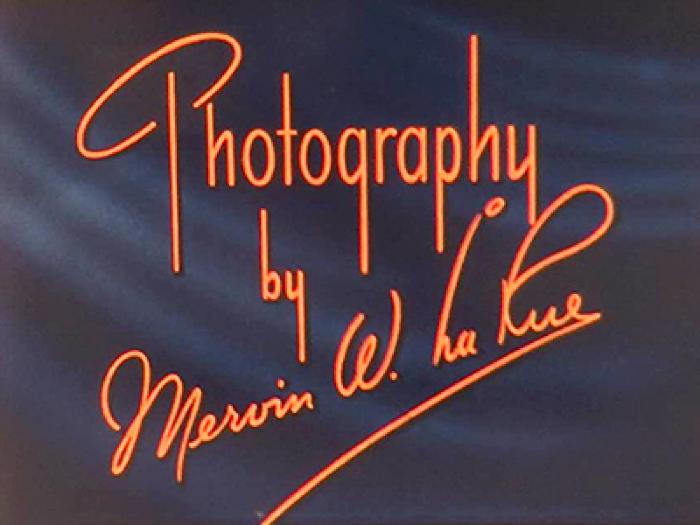

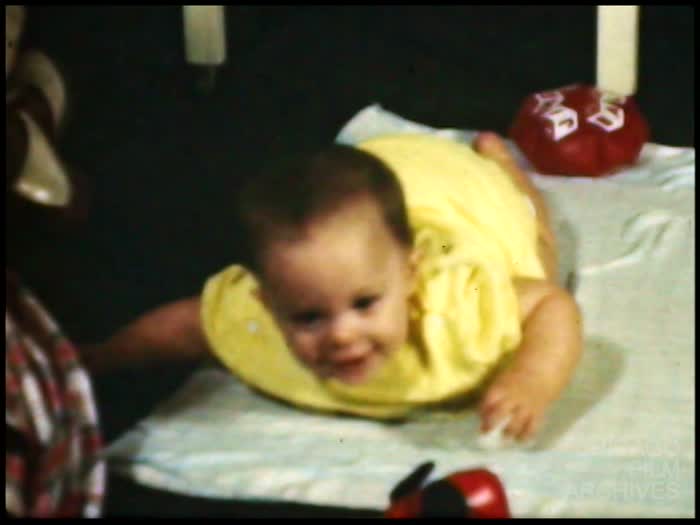
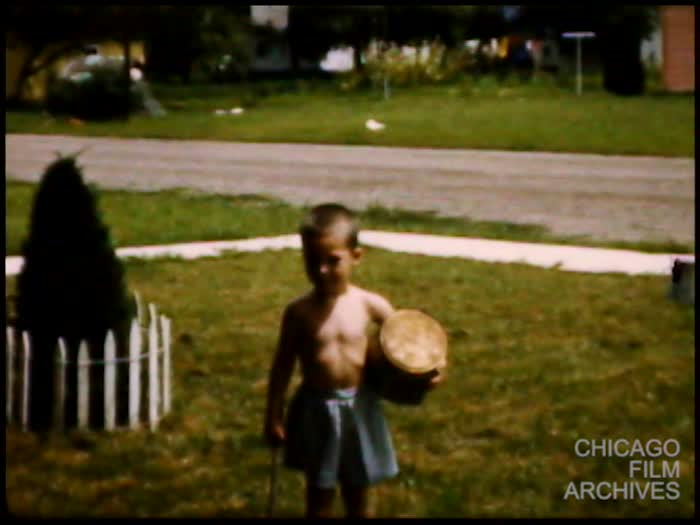
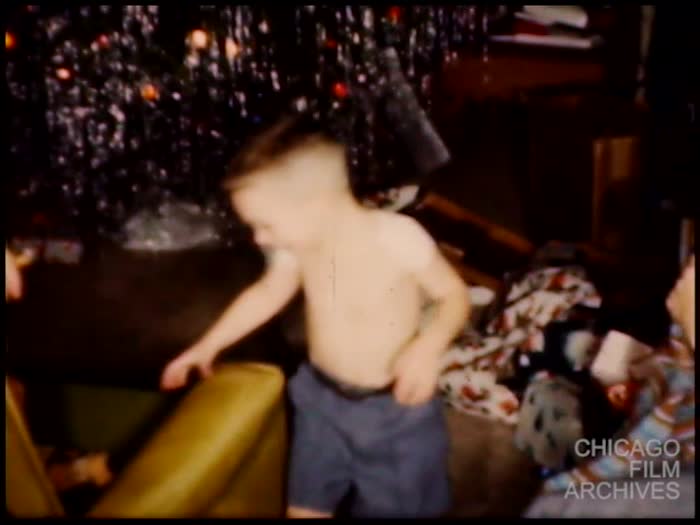
![1965: [Home Movies with Wellington Family]](https://collections.chicagofilmarchives.org/media/cfa/images/3/7/1645_ca_object_representations_media_3785_large.jpg)
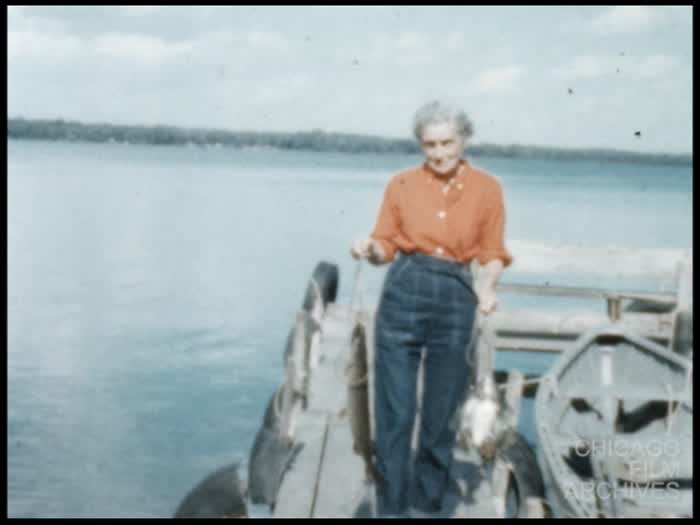

![1939-1948: LaRue Personal Reel 1 - [Mervin Jr. & LaVere's Wedding / Michèle's 1st Baby Movies / Merv Sr. & Jo]](https://collections.chicagofilmarchives.org/media/cfa/images/3/7/5210_ca_object_representations_media_3788_large.jpg)
![1949: LaRue Personal Reel 3 - [Ontario Trip]](https://collections.chicagofilmarchives.org/media/cfa/images/3/7/13490_ca_object_representations_media_3790_large.jpg)
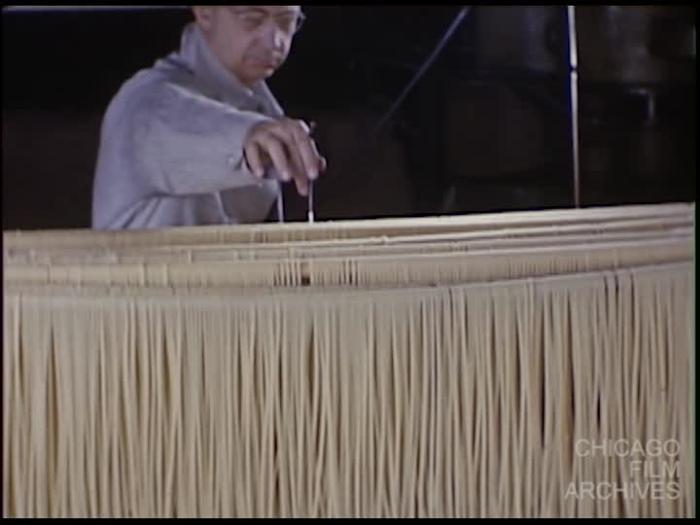
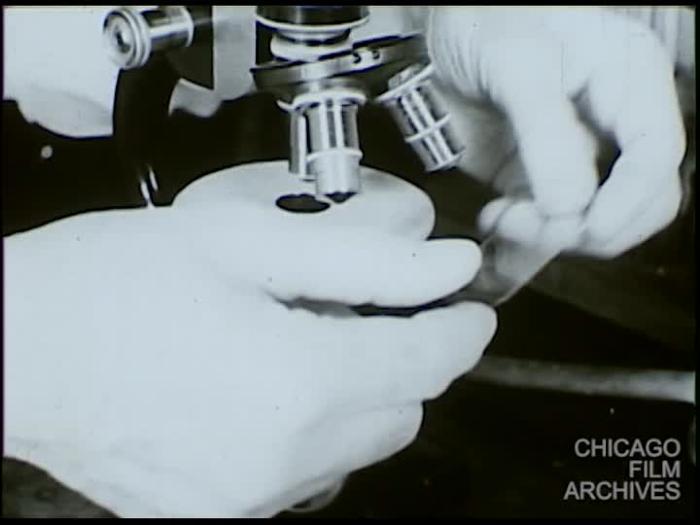

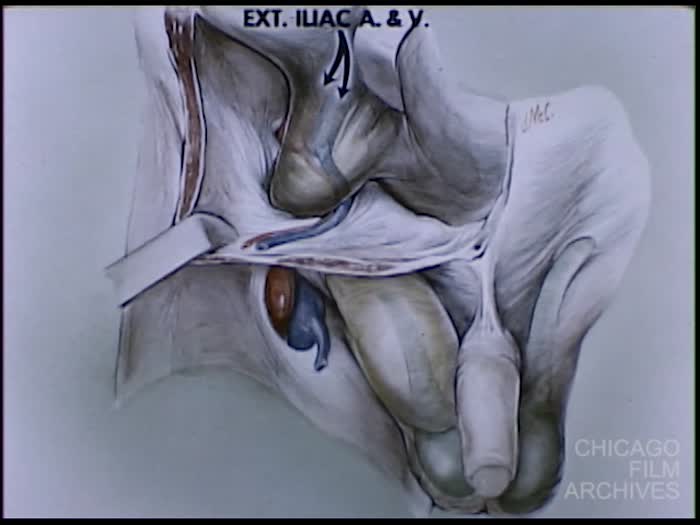

![LaRue Personal Reel 3 - [Instructional Parenting Film]](https://collections.chicagofilmarchives.org/media/cfa/images/3/7/68697_ca_object_representations_media_3789_large.jpg)